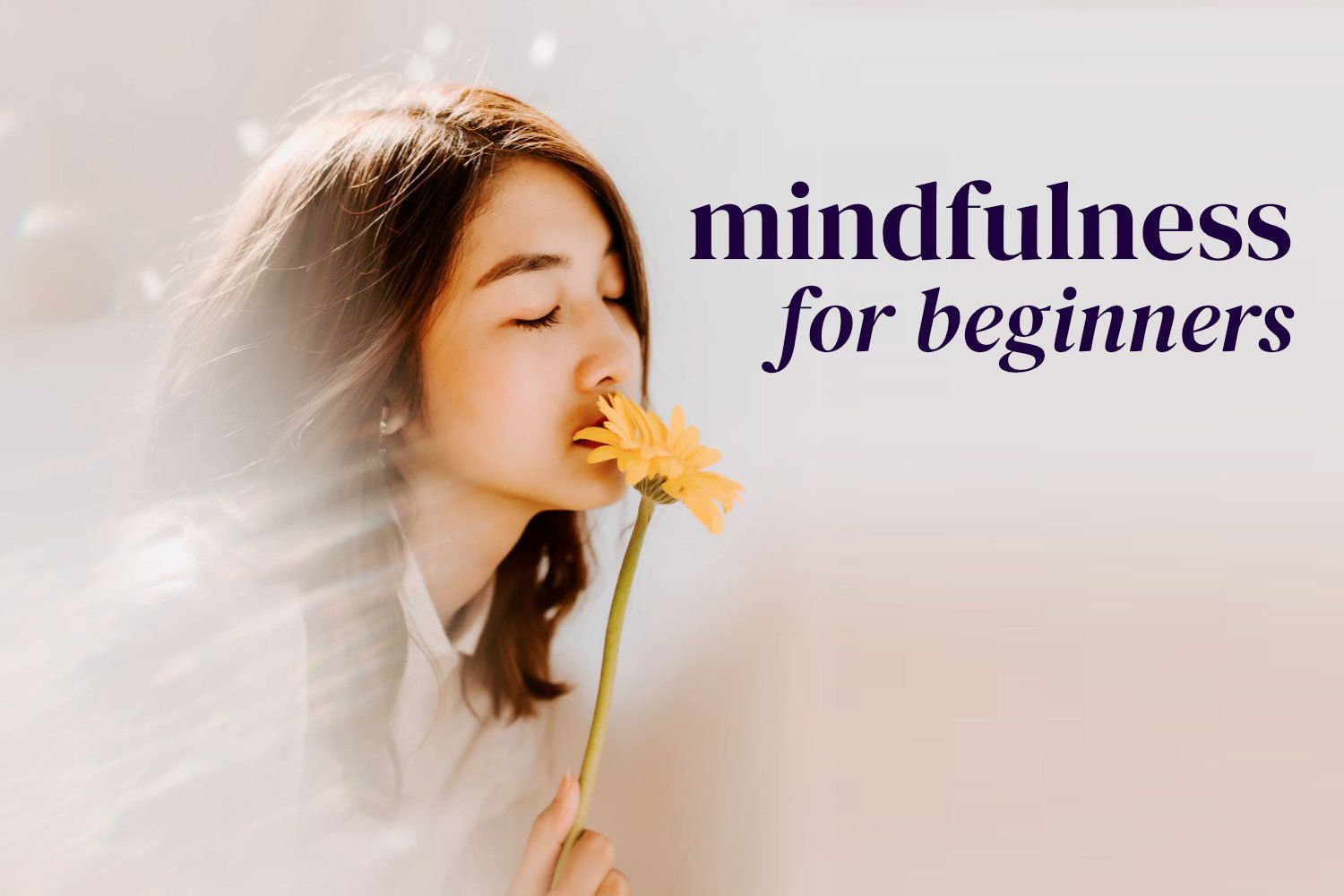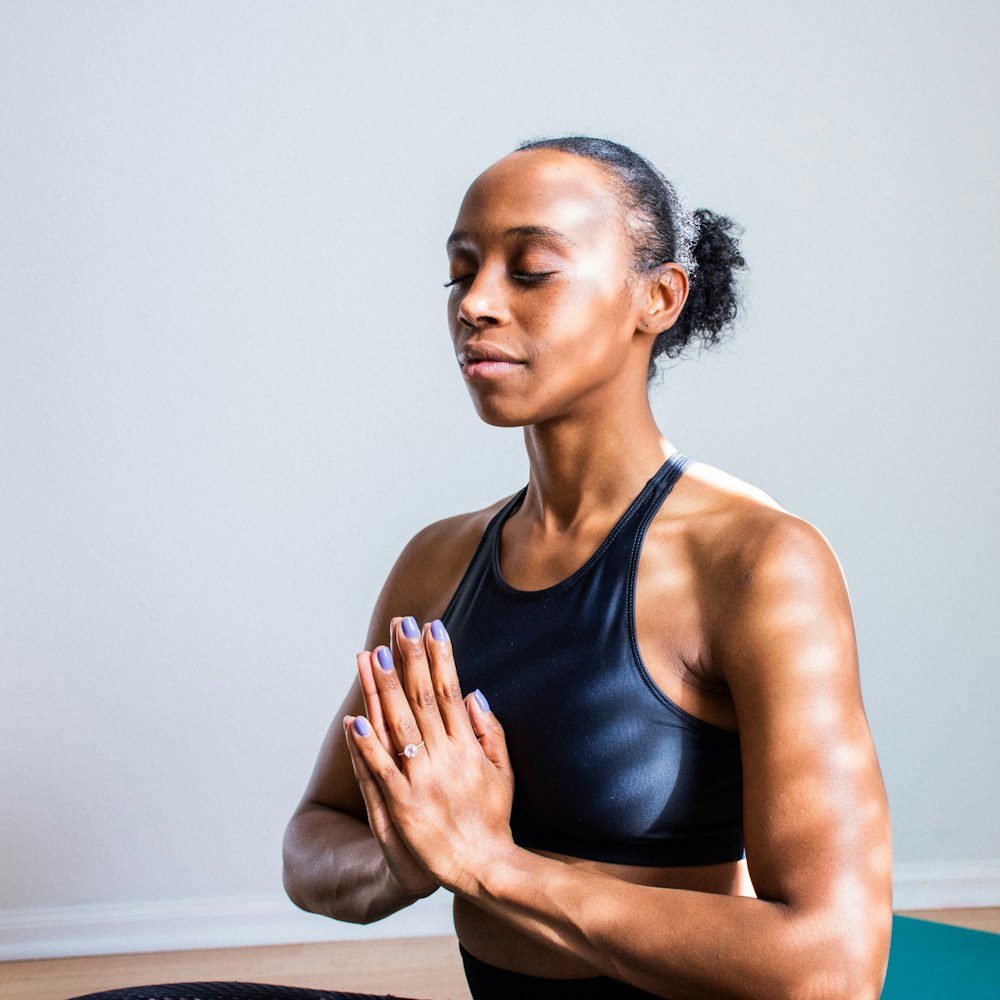Mindfulness for beginners

How to start living in the present moment through mindfulness, and use it alongside journaling to make a powerful daily habit.
What is mindfulness?
When we think of mindfulness, we often imagine someone sitting in lotus pose in nature, meditating and taking in everything around them. While that is a fantastic way to practice mindfulness, it’s definitely not the only way, and it doesn’t tell the whole story.
Mindfulness is a psychological process that involves bringing one’s attention, with purpose and intention, to the experiences and feelings that are happening right now. It’s a process of humbly accepting our surroundings and our environment, without judgment or opinion.
The practice of mindfulness has been proven to help with a variety of things — from coping with depression and managing anxiety, to helping to alleviate stress and reduce pain. However, it can feel like getting started — and doing it well enough to reap all the benefits — is a monumental task. Here we have gathered a few methods and habits that can help beginners get started with mindfulness, from the ground up.
We’ll also take a look at how journaling — another practice that has been used for millennia to help with awareness, decision-making, and mental clarity — can be used alongside mindfulness, to improve quality of life, and to make sure to stick with it on a daily basis.
What mindfulness looks (and feels) like
The most common and classic way to get started with mindfulness is through meditation. We’ve heard it before — sit in a comfortable position, close your eyes, and center your mind in the present moment. But what if you don’t like meditation? What if you’ve tried it before, but you’re just not made for it? Or what if you just don’t have the time or patience to just sit with a blank mind?
Mindfulness doesn’t have to look a certain way — it’s not about the way you sit, or about being in a beautiful nature location, or about certain equipment like a dedicated yoga mat or cushion. So instead of waiting to have a perfect location and a perfect position, you can just start the mindfulness journey right here, right now, wherever you are.
Start by listening to what’s around you. What can you hear? Are there people around chattering? Are there any animals making noises? Any machines or devices working? Don’t judge the sounds, and don’t wish it was quiet or perfect — just bring your awareness to all these sounds you can perceive.
Then, travel a little bit further — maybe you can listen to sounds outside, the neighbors, or noise from the street. What’s the farthest sound you can hear right now? Maybe some music playing from an unknown source, an airplane flying by, or a car far away?
And then, come back to where you are, and focus on your own sounds. Listen to your own breathing, or the sound the chair makes beneath you. Listen closely, and take note of what you can hear. None of these sounds and noises are inherently bad, and none are good either — they are just sounds that you’re taking the time to notice.
Now pick another sense — let’s go for touch. What can you feel? Similarly, describe each thing you can feel. The weight of your body on your chair. The movement of your chest when you breathe. Maybe a part of your body is tense and achy, or maybe a limb is starting to fall numb from sitting too long in a same position — don’t try to fix it, just feel it and acknowledge it.
Do you feel a breeze going by? Is the air hot and still; or is it chilly? Dry or humid? Describe what you feel.
And keep going. What about smell? Maybe there is nothing to smell, or you can’t smell — and that’s all right. But usually, when we bring our awareness to the nose and what it can perceive, we’ll start noticing hints of smells coming from all around us: maybe a neighbor is cooking their meal, or someone is having a coffee nearby. Are there any scents coming plants and trees, any flowers around? A perfume or fragrance that someone is wearing, maybe yourself; or even the smell of the room you’re sitting in; the smell of wood, or books, or a running A/C or heater. If you come across any unpleasant smells, don’t judge them or try to get rid of them. Just recognize that they are there.
A last one for now, probably the sense most people pay the most attention to — what can you see? What objects are around you? It doesn’t matter if it’s tidy or chaotic or somewhere in between — snap out of judgment, and instead, just notice things. Are there people around? Pets or plants? Be aware of their existence, and then move on to noticing something else.
It doesn’t end there, but you get the point — go through your senses, one by one, and notice your surroundings. Whenever judgment starts crawling up, replace it with awareness or appreciation.
How to incorporate mindfulness into daily life
Being mindful for 20 minutes while someone guides us is a very pleasant and relaxing experience. However, it’s easy to leave it as a one-time thing; and just like exercising, eating vegetables, drinking water, and journaling, the benefits of practicing mindfulness don’t really come from doing it once, but instead, from incorporating it into daily life as a habit.
Luckily, mindfulness can be practiced almost anytime and anywhere. A very easy way to incorporate mindfulness for beginners is to join mindfulness with other activities, like the aforementioned exercise, healthy eating, hydration, and journaling. So try to “stick” a mental reminder to be mindful, to whenever you’re doing a specific activity. For example, if you enjoy running: next time you go for a run, start noticing your surroundings, everything you can perceive. Really appreciate and feel everything you can while you’re running. Choose a trigger to remind you to be mindful, like when you’re lacing your running shoes, or when you put the first step out the door, or when you run past a specific location.
And just like that, you can “stick” mindfulness onto the back of any other activity, like a sticky note on the fridge or the front door — while brushing your teeth, eating your favorite vegetable, drinking water from your favorite water bottle, or sipping on tea or coffee. Adjust this to your lifestyle, and find out what activities would work better for you as a trigger to start being mindful.
How journaling and mindfulness can help each other
We already know how mindfulness can bring some amazing benefits to our lives. And if you’re been reading the Diarly blog for a while, you also know how life-changing journaling can be. Joining these two practices together can be a fantastic way to reap the benefits of both, to remember to do both, and to increase your likelihood to actually do them both on a regular basis.
Instead of just thinking about our surroundings and our body’s feelings, an easier way to get started with mindfulness is to write those sensations and feelings down in your journal. Not only does this help to stay present in your mindfulness practice for a longer time and go deeper into the sensations, but it can also be a great way to get into the habit of writing what you feel, being honest and open about what is happening, without judging and without having an opinion. Being mindful while journaling can be an excellent way to improve our writing, to get to know ourselves better, and to have a clear and open-minded conversation with ourselves, and purposefully leaving out judgment and opinion is the best way to take a third person look at our lives.
Around me, I feel the hot air of the day getting cooler for the afternoon. I can smell tea from the cup, and can hear the sound of a fan running. I can also feel the weight of my body on the chair, and the soft pressure of my fingers tap-tap-tapping on the keyboard as I type.
Mindfulness can make us better at journaling. Journaling can make us better at mindfulness.
But how can you stick to it, and do it every day? Here are two ways you can try, which have helped us practice both mindfulness and journaling more often.
- “Stick” the practice onto something else. If you’re already taking time every day to journal, that can be an excellent time to also include some mindfulness — or vice-versa. Another way to use this is to stick journaling and mindfulness onto another activity — for example, journal for 15 minutes before watching TV in the evenings, or after eating a meal, or right after waking up. Whatever works for you.
- Schedule it into your days. Intentionally include journaling and mindfulness onto your daily schedule. You can either add it to your daily to-do list, if that’s your thing, or you can set a reminder alarm every day, when you know you won’t be too busy, to remind you to take some time for yourself.
I know that yoga, meditation, and journaling helped a lot of people like me through tough times, and making the space for it is the best way to add these practices to one’s life. Learn more about having a meditation and yoga space at home 📿 🧘 🤸 — I hope it helps you to create your own space for mindfulness.

